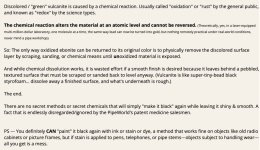A fellow named Peter created this blog post on 04/27/2014. The original is in German.
Having lost useful blog posts before, I thought I would copy/paste this one as a backup and to spark some conversation. Minor editing for clarity and translation follows.
"I have used this method on over a hundred estate pipes:
Take 60% acetic acid. Put it in a glass. I use 100ml laboratory glassware. Only a finger's breadth of acetic acid needs to be put in. Then the mouthpieces go in, with the tap facing downwards. (Mouthpiece upwards)"
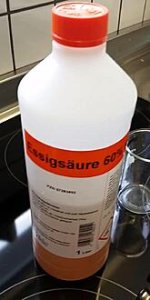
"I have selected three mouthpieces for illustration purposes. Two are heavily tarnished, and the third has tarnished residue in the slot that is difficult to polish away. I then put the glass in the microwave and run the whole thing on the highest setting for 2 minutes . The acetic acid starts to boil and evaporate relatively quickly (after 40 seconds). After turning it off, it is best to open a window, hold your breath, and place the hot glass on the windowsill. As soon as the vapors have cleared, you can watch the tarnished sulfur layer on the ebonite disappear. An exothermic reaction takes place with the oxygen in the air, which etches away the tarnished sulfur layer. But only on the surface. After a few minutes, the mouthpiece is black again and the hot acetic acid on the mouthpiece has evaporated. In the places where the deposits were, the surface is naturally dull , so you have to polish it again. In very difficult cases (such as with the square mouthpiece) you simply repeat the procedure. The mouthpiece can then be polished relatively easily. The brown tint on the square mouthpiece is only visible in the photo; in reality it is black. This method is much gentler than soaking it in chlorine for days. The acetic acid evaporates completely, leaving no trace of odor or taste on the mouthpiece. Acetic acid is relatively harmless; you can even get it on your hand without it immediately etching holes. If you dilute it 1:10 with water, you can also use it to dress a salad. Just don't breathe in the hot steam. If you don't have high-percent acetic acid to hand, you can also use vinegar essence (25%). Then you may have to repeat the process several times if the mouthpiece is very tarnished."
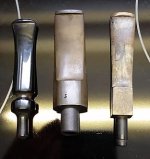

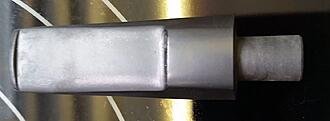

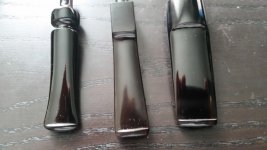
Having lost useful blog posts before, I thought I would copy/paste this one as a backup and to spark some conversation. Minor editing for clarity and translation follows.
"I have used this method on over a hundred estate pipes:
Take 60% acetic acid. Put it in a glass. I use 100ml laboratory glassware. Only a finger's breadth of acetic acid needs to be put in. Then the mouthpieces go in, with the tap facing downwards. (Mouthpiece upwards)"

"I have selected three mouthpieces for illustration purposes. Two are heavily tarnished, and the third has tarnished residue in the slot that is difficult to polish away. I then put the glass in the microwave and run the whole thing on the highest setting for 2 minutes . The acetic acid starts to boil and evaporate relatively quickly (after 40 seconds). After turning it off, it is best to open a window, hold your breath, and place the hot glass on the windowsill. As soon as the vapors have cleared, you can watch the tarnished sulfur layer on the ebonite disappear. An exothermic reaction takes place with the oxygen in the air, which etches away the tarnished sulfur layer. But only on the surface. After a few minutes, the mouthpiece is black again and the hot acetic acid on the mouthpiece has evaporated. In the places where the deposits were, the surface is naturally dull , so you have to polish it again. In very difficult cases (such as with the square mouthpiece) you simply repeat the procedure. The mouthpiece can then be polished relatively easily. The brown tint on the square mouthpiece is only visible in the photo; in reality it is black. This method is much gentler than soaking it in chlorine for days. The acetic acid evaporates completely, leaving no trace of odor or taste on the mouthpiece. Acetic acid is relatively harmless; you can even get it on your hand without it immediately etching holes. If you dilute it 1:10 with water, you can also use it to dress a salad. Just don't breathe in the hot steam. If you don't have high-percent acetic acid to hand, you can also use vinegar essence (25%). Then you may have to repeat the process several times if the mouthpiece is very tarnished."





Attachments
Last edited:










